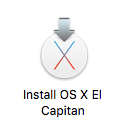I have written a "recover the Recovery HD" script. It shares much of its code with the original Pikify3.1 scripts.
Use this tool if you want to utilise the Recovery HD. It is especially useful if you have run the 10.11.2 update and found that the Recovery HD has been updated and you can no longer boot from it.
As always the ZIP file contains the script plus supporting files. These all need to be kept together in the same folder. The ZIP file should extract to a folder called rrhd. Inside that folder is the script itself, also called rrhd (along with the supporting files). Open a Terminal, become the super user, execute the script with the volume name of the disk you want to update.
E.G. assuming you unzipped the ZIP file in your Downloads folder, and assuming your El Capitan drive is mounted as /Volumes/El Capitan (change these to suit your situation)
Code:
cd ~/Downloads/rrhd
sudo -s
[your password]
./rrhd /Volumes/El\ Capitan
For those people that run multiple disks with versions of Mac OS X installed, this rrhd script will present the Recovery HD in the boot picker as 'Recovery HD (Your El Capitan disk name)'. It makes it easier to identify which Recovery HD belongs to which main OS disk!


